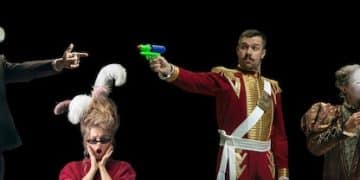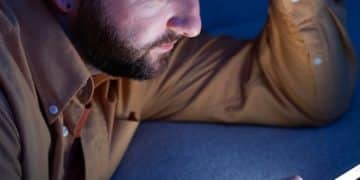Unveiling Costume Confidential: Hidden Wardrobe Details You Missed
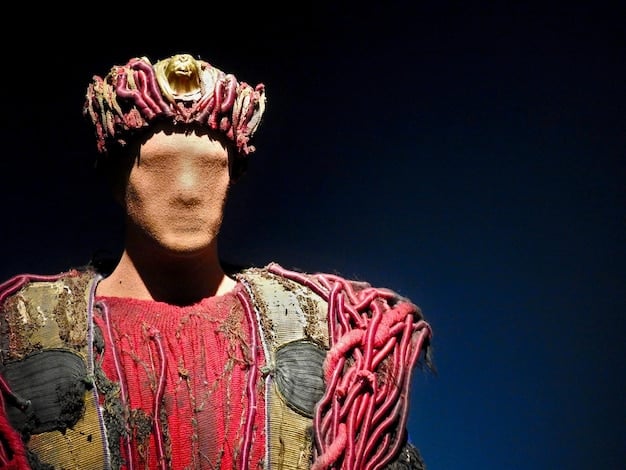
Costume Confidential delves into the meticulous details of television and film wardrobes, revealing the hidden stories and craftsmanship behind iconic character looks, enriching the viewing experience for costume enthusiasts.
Delve into the captivating world where clothing transcends mere fabric and becomes a powerful storytelling tool. Costume Confidential unearths the fascinating hidden details within the wardrobes of your favorite series, offering a new perspective on character development and narrative depth.
The Art of Costume Design: More Than Just Clothes
Costume design is often overlooked, yet it’s a crucial element in bringing characters to life. These aren’t just random outfits; they’re carefully crafted visual representations of personality, history, and even future aspirations.
The best costume designers understand the psychology of color, the language of fabric, and the power of silhouette. They use these tools to communicate unspoken truths about the characters, adding layers of depth to the story.
Symbolism Woven into Seams
Every button, every stitch, every frayed edge can tell a story. A character consistently wearing a specific color might signify their loyalty or hidden desires. Similarly, the type of fabric they favor could hint at their social status or personal history.
Character Development Through Wardrobe
Watch for how a character’s clothing evolves throughout a series. A shift from dark, concealing clothes to brighter, more revealing outfits might indicate personal growth or a change in their circumstances.
- Color palettes: How designers use colors to signify mood and relationships.
- Fabric choices: The subtle messages conveyed by different textures and materials.
- Silhouette and shape: How outfits define and reflect character body language and confidence.
- Accessories: Tiny but mighty, accessories like jewelry, hats, and shoes add depth and personality.
Understanding these details can enhance your viewing experience, turning you into a more engaged and insightful audience member.
Decoding the Designer’s Palette: Color Psychology in Costumes
Color is more than just aesthetics; it’s a powerful communication tool that costume designers wield to subconsciously influence the audience’s perception of a character. From vibrant hues to muted tones, each shade carries a specific weight.
Imagine a character perpetually clad in deep blues – this could signify a calm, trustworthy nature. Conversely, a character who favors fiery reds might be passionate, impulsive, or even dangerous.
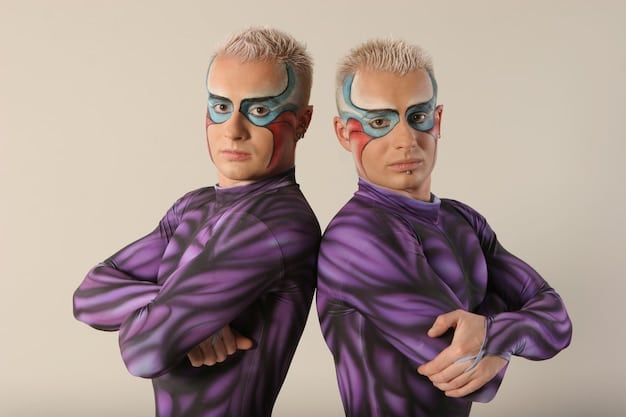
The Emotional Impact of Hues
Consider the impact of color on your own mood. Do you feel energized by yellows, or soothed by greens? Costume designers tap into these universal associations to create an immediate connection between the character and the viewer.
Color as a Narrative Tool
Color choices also play a vital role in storytelling. A sudden shift in a character’s color palette might foreshadow a significant change in their arc or relationships.
- Red: Passion, danger, anger, importance.
- Blue: Calmness, trust, sadness, stability.
- Green: Nature, growth, envy, healing.
- Yellow: Happiness, optimism, caution, deceit.
By observing these deliberate color choices, you can uncover deeper layers of meaning in the characters’ actions and motivations.
The Fabric of Their Lives: Material Choices and Backstories
Beyond color, the very fabric used in a costume can provide clues about a character’s past, present, and even future. A character from humble beginnings might sport durable, practical fabrics like cotton or linen.
In contrast, a wealthy socialite might drape themselves in luxurious silk or velvet, signaling their status and access to finer things. These aren’t arbitrary decisions, but thoughtful choices that enrich the character’s narrative.
Texture as a Telling Detail
Pay attention to the texture of the fabrics. Rough, coarse materials may suggest a character’s resilience and connection to the earth, while smooth, delicate fabrics could hint at vulnerability or refinement.
Material Evolution: A Visual Metamorphosis
The transition from one type of fabric to another can signify a character’s evolution. A character initially seen in tattered clothes, gradually transitioning to tailored suits could illustrate their rise in power and influence.
- Denim: Working class, practicality, rebellion.
- Silk: Luxury, elegance, fragility.
- Leather: Strength, protection, edginess.
- Lace: Delicacy, femininity, opulence.
By acknowledging the deliberate use of textiles, you’re not just seeing clothes, but reading the character’s biography.
Silhouettes and Body Language: How Outfits Shape Perception
The silhouette of a costume – its overall shape and form – plays a significant role in how we perceive a character. A form-fitting silhouette can convey confidence and sensuality, while a loose, flowing silhouette might suggest freedom or vulnerability.
Consider the power suits of powerful executives, the flowing gowns of ethereal beings, or the simple work clothes of a commoner. Each choice is deliberate, contributing to the character’s portrayal.
Exaggerated Shapes: Creating Impact
Sometimes, costume designers use exaggerated silhouettes to create a specific impact. A towering headdress or oversized shoulders can amplify a character’s authority or dominance.
Clothing as a Constraint
Conversely, clothing can also be used to restrict a character’s movement or expression. A tight corset or heavy armor can symbolize limitations and suppress their true nature.
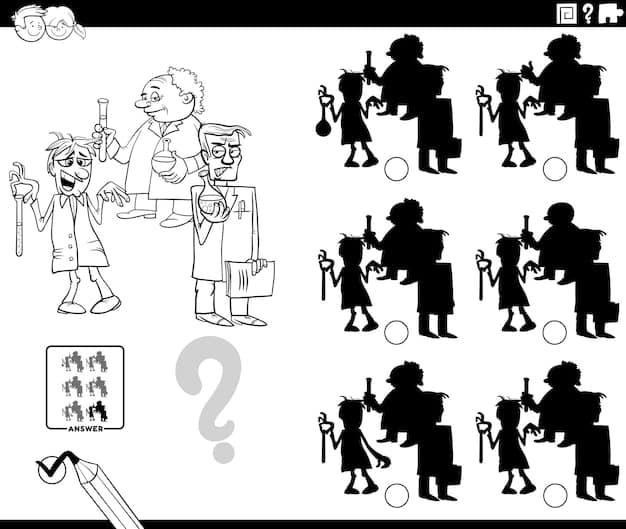
- The A-line: Feminine, youthful, and graceful.
- The Hourglass: Classic, sensual, and confident.
- The Empire Waist: Romantic, delicate, and ethereal.
- The Straight Line: Modern, minimalist, and powerful.
The silhouette works in harmony with body language, creating a holistic visual representation of the character’s inner world.
Hidden Details in Accessories: The Devil’s in the Wardrobe
Accessories are the final touches that transform a costume from ordinary to extraordinary. These seemingly small elements – jewelry, hats, shoes, belts – add personality and nuance to a character’s overall look.
A character’s signature piece of jewelry might have sentimental value, representing a lost love or a cherished memory. A unique hat could signify their eccentric personality or connection to a specific social group.
The Language of Jewelry
The type of metal, the size of the stones, and the overall design of the jewelry can reveal insights into a character’s wealth, status, and personal style.
Footwear as a Reflection of Journey
Consider the footwear a character sports. Sturdy boots suggest adventure and resilience, while delicate heels speak to refinement and elegance. Worn-out shoes could symbolize struggle and hardship.
- Scarf: Symbol of warmth, protection, or hidden identity.
- Gloves: Denote sophistication, formality, or secrecy.
- Belt: Symbol of power, control, or constriction.
- Watch: Can represent punctuality, status, or an obsession with time.
By zooming in on these subtle details, you can unlock a wealth of information about the characters and their place in the story.
Beyond the Screen: Recreating Iconic Looks
The impact of costume design extends far beyond the screen. Many viewers are inspired to recreate iconic looks from their favorite series, either through cosplay, fashion trends, or everyday wardrobe choices.
This desire to emulate fictional characters underscores the power of costume design to influence self-expression and shape cultural trends. By understanding the underlying principles of costume design, you can create your own unique and compelling looks.
Cosplay: Embodying the Character
Cosplay allows fans to fully immerse themselves in the world of their favorite series, showcasing their creativity and attention to detail. The best cosplayers meticulously research and recreate costumes, capturing the essence of the character.
Inspiration in Everyday Fashion
Costume design often inspires fashion trends, with elements from popular series making their way into everyday wear. Consider the influence of period dramas on vintage-inspired clothing or the impact of superhero films on athleisure wear.
- Research thoroughly: Study the original costumes from multiple angles.
- Pay attention to detail: Focus on accuracy, from fabric choices to accessories.
- Embrace creativity: Add your own personal touch to the look.
- Have fun: Express your passion for the character and the series.
Whether you’re creating a full cosplay outfit or simply incorporating a few key elements into your wardrobe, the principles of costume design can help you express your identity and connect with the characters you admire.
| Key Point | Brief Description |
|---|---|
| 🎨 Color Psychology | Colors used in costumes often reflect and influence character emotions. |
| 🧵 Fabric Choices | Fabrics indicate social status or reveal elements of a character’s backstory. |
| 🎽 Silhouette | Outfits that shape perceptions and can restrict movements can symbolize deeper implications. |
| 💍 Accessories | Small items can add considerable personality and detail, offering further insight |
FAQ
Costume design serves as a visual tool to enhance character development, convey unspoken messages, and enrich the storytelling. It adds layers of depth and meaning to the viewing experience.
Designers strategically use colors to evoke certain emotions and perceptions. For example, red may signify passion or danger, while blue often represents calmness or trust, guiding audience interpretation.
The types of materials reflect details about status. Silk or velvet may indicate wealth/elegance. Choices are made carefully and enrich understanding of the characters.
Accessories punctuate a character’s look, adding personality and telling stories. Jewelry can hint at status or memories. Accessories give deeper, more nuanced insight.
Start with thorough research, paying attention to every detail from fabric to accessories. Don’t be afraid to add creativity and make each piece your own piece of art.
Conclusion
By understanding the hidden details in costumes, we can deepen our appreciation for the artistry and storytelling of film and television. These aren’t just garments; they’re a carefully designed language that speaks volumes about the characters and the world they inhabit.

